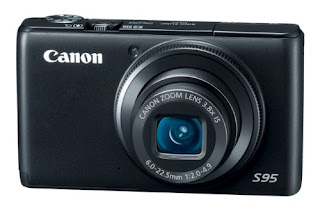
"Preserve your memories, they're all that's left of you"
Teaching you fun and interesting things to do with your digital images. Whether it's highlighting a new app, or a tutorial on how to edit a photo, we want to help you make the most of your memories.
Visit our blog every Thursday when we will post a brand new thought or quote! What's the point of our 'Thursday Thought' feature? Because everyone could use a good one every now and then.
Want to see your raving reviews here? Comment on one of our social media sites, or email us at customerservice@larsendigital.com. We love hearing from you!
Your old film and photos can go through a lot. Whether they are extremely discolored, torn or ripped by a child, involved in a flood or accident, we want to fix it!
The world's very first photograph! We wouldn't have a business if the photography industry never progressed. It's amazing how far we come, and how advanced we continue to get.

"Preserve your memories, they're all that's left of you"




 By Nancy Hill
By Nancy HillTraveling with photo equipment can get complicated, but traveling without photo equipment would be pointless to anyone who loves photography, so here are some pointers that should take some of the stress out of it.
1. If you’re flying, carry your camera onboard with you to avoid damage. When you go through metal detectors, ask the attendant to hand-screen your film. To help expedite hand-screening, carry your film in clear canisters or remove it from its packaging and place it in clear plastic bags.
If you can buy film where you’re headed, consider waiting until you get there to purchase it. It’ll at least make one leg of your trip easier going through screening devices.
Do not pack unprocessed film in checked luggage. The scanner equipment is stronger than the ones used for carryon bags, and may well fog your film.
Check your airline’s web site to find out carry-on and checked-luggage policies. Some overseas airlines or small airlines do not allow you to carry luggage onto the plane with you.
Digital media are not affected by x-rays, but magnetic devices could harm them. Because there may be powerful magnets in the motors of conveyor belts, place your camera as far away from the beginning of the belt as possible.
2. If you’re traveling by car, keep your camera inside when you’re driving so it will stay cool. Carry it with you when you leave your car; it can easily be stolen out of the trunk.
3. Always, but always, keep your eye on your equipment. It takes only a couple of seconds for anyone to grab an unattended camera bag. Dangling a camera from your neck isn’t a good idea, either; it’s very easy to cut a strap with a quick cut of a sharp knife.
4. Know what you’re going to do about storing digital images before your trip begins. Personally, I prefer memory cards. Lugging around a computer or portable storage devices is a hassle. If I’m particularly protective about images, I either go to a one-hour lab and have them download the images to a CD or I go to a cyber cafe and download the images to an online image bank. If I need more memory cards, I just buy them. They’re not hard to find. If I think they may be hard to find, I take extra ones with me. You can never have too many memory cards.
5. Insure your equipment. See if your insurance company already covers your equipment in case of theft or damage. If it doesn’t, get a policy that will, especially if you’re traveling with thousands of dollars worth of equipment.
6. Unless you know your camera inside and out, take your manual with you. Just pack it in your luggage.
7. Make sure you take all your cords, etc. with you. If anything needs an outlet, bring an electric plug adapter if you’ll travel overseas. Bring one for your car, too, if you’ll be doing a lot of shooting in the field.
8. Protect your camera from inclement weather.
9. Avoid leaving your gear in extreme heat.
10. If it rains unexpectedly, the very least you should do is get your camera under an item of clothes to shield it the best you can. Get out of the rain.
11. If it’s cold, warm your camera up with your body heat to avoid condensation. If condensation does occur, empty the battery and memory compartments and keep the compartments open until they’re dry. If you take them back outside with condensation, they may freeze, and that’s bad news.
12. Use a UV filter to protect your lens.
13. Take equipment you’re familiar with. Traveling isn’t the time to try out new equipment if you want to be confident you’ll get good results.
14. Travel light with a good bag. Don’t bring every lens or body you have “just in case.” By limiting yourself, you may also find new ways of seeing.
15. If you’re going overseas, declare all your photo equipment with custom officials at the airport before you leave so you won’t have to prove ownership when you return.